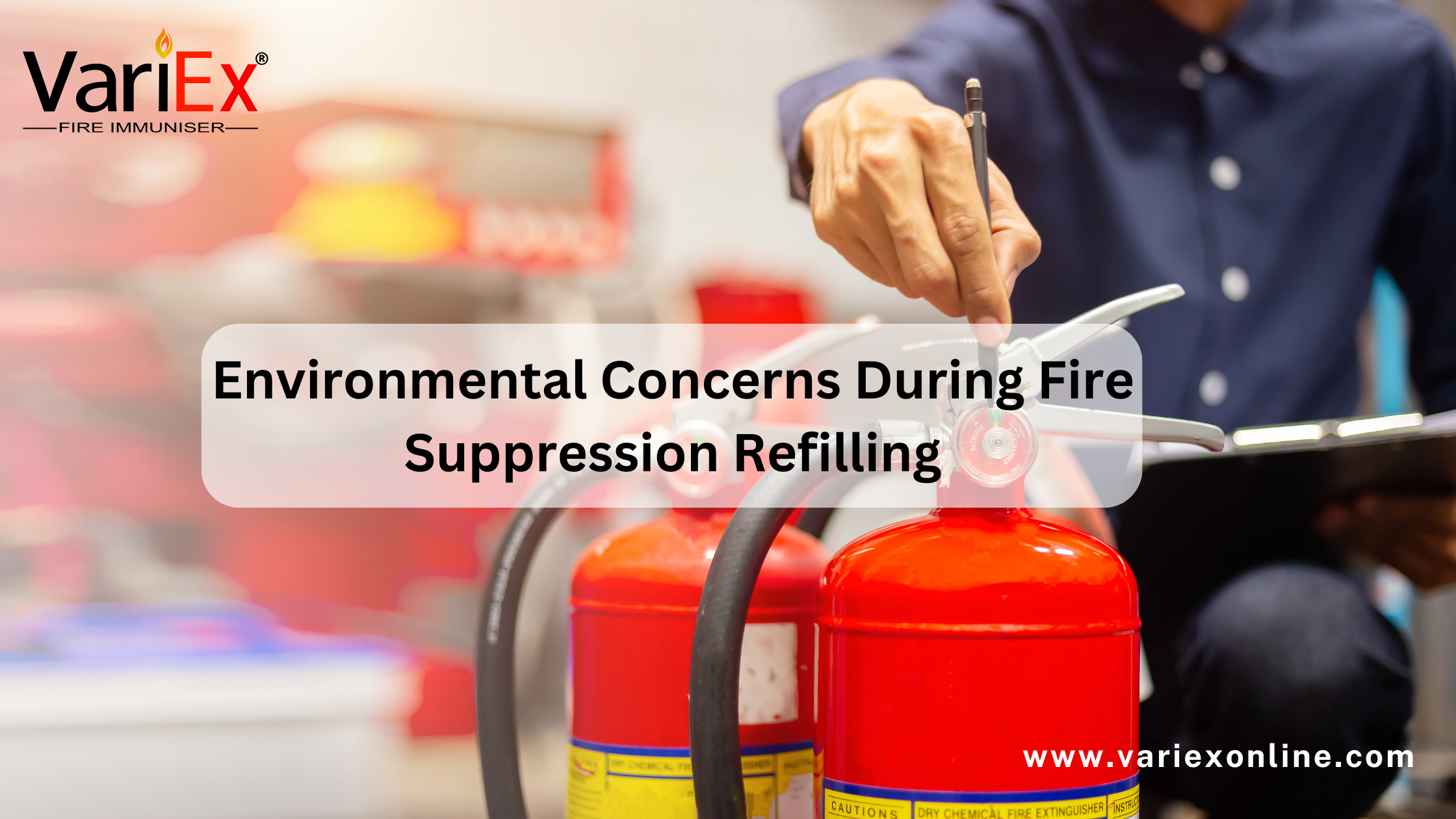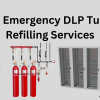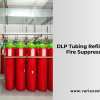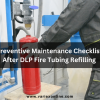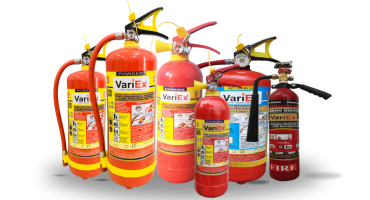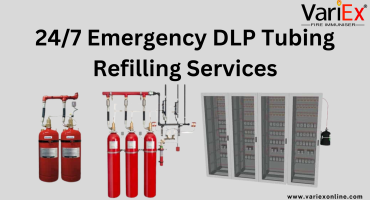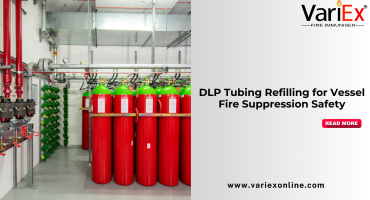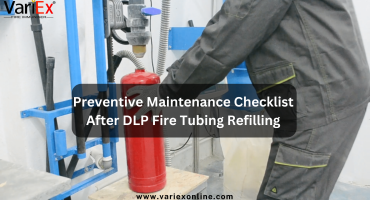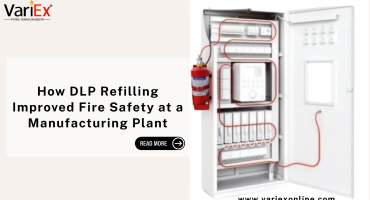![]()
Fire Immuniser
+91-7829629111
Email: info@variex.in
Varistor Technologies Pvt. Ltd.
Block-1, First Floor, Ardente Office One, Hoodi Circle, ITPL Main Road, Bengaluru, Karnataka 560048, IN
Environmental Concerns During Fire Suppression Refilling
Environmental Concerns During Fire Suppression Refilling
Fire suppression systems play a vital role in safeguarding lives, property, and critical infrastructure. However, the refilling process of these systems raises serious environmental concerns—from chemical leaks to greenhouse gas emissions and water contamination.
As awareness of environmental sustainability grows, businesses and safety professionals are being held to higher accountability standards. This guide highlights the key environmental risks associated with fire suppression refilling, applicable regulations, and how to adopt eco-conscious practices without compromising fire protection.
Why Environmental Concerns Matter in Fire Suppression Refilling
Most fire suppression agents—whether chemical, gas, or foam—contain hazardous compounds that can:
-
Deplete the ozone layer
-
Contribute to global warming
-
Pollute water bodies and soil
-
Harm aquatic and terrestrial life
Improper refilling techniques or agent disposal can result in regulatory violations, environmental damage, and public health risks.
Table: Environmental Impact of Fire Suppression Agents
| Suppression Agent | Type | Environmental Risk | Global Warming Potential (GWP) | Ozone Depletion Potential (ODP) |
|---|---|---|---|---|
| CO₂ (Carbon Dioxide) | Gas | Contributes to greenhouse effect | 1 | 0 |
| FM-200 (HFC-227ea) | Hydrofluorocarbon | High GWP; persists in atmosphere | ~3220 | 0 |
| Halon 1301 | Halocarbon | Banned; severe ozone depletion and high GWP | ~7140 | 10 |
| Novec 1230 | Fluorinated Ketone | Low GWP; considered eco-friendly alternative | ~1 | 0 |
| AFFF (Aqueous Foam) | Foam | Contains PFAS; contaminates soil and water | Medium | 0 |
| Wet Chemical (Potassium-based) | Liquid | Low environmental risk if disposed properly | Low | 0 |
1. Halon: The Original Offender
Halon 1301, once widely used in fire suppression systems, was found to have devastating effects on the ozone layer. It has been phased out under the Montreal Protocol, yet some older systems still use it illegally or without awareness.
Environmental Impact:
-
Extremely high Ozone Depletion Potential (ODP = 10)
-
High Global Warming Potential (GWP = 7140)
-
Long atmospheric lifetime (65+ years)
Best Practice:
Safely decommission Halon systems and replace them with eco-friendly agents like Novec 1230.
2. FM-200: A Cleaner but Not Clean Enough Agent
FM-200 (HFC-227ea) is commonly used in clean agent systems due to its non-conductive and residue-free nature. However, it is a potent greenhouse gas with a high GWP and has become a target for regulatory phase-down in Europe and elsewhere.
Environmental Risks:
-
High GWP (~3220)
-
Accidental leaks during refilling can contribute to climate change
-
Disposal without neutralization can impact air quality
Best Practice:
Minimize emissions by using sealed systems, leak detectors, and trained technicians for refill tasks.
3. CO₂ Systems: Neutral for Ozone, Bad for Climate
While CO₂ systems do not deplete the ozone layer, they significantly contribute to carbon emissions. During refilling, any accidental discharge directly adds CO₂ to the atmosphere.
Environmental Concerns:
-
GWP of 1, but cumulative impact due to widespread use
-
Can harm personnel in enclosed spaces during leaks
Best Practice:
Optimize system designs to reduce overfilling, use pressure sensors, and refill in ventilated environments.
4. Foam-Based Systems: PFAS Contamination
AFFF (Aqueous Film Forming Foam) systems are effective for Class B fires but are under scrutiny for containing PFAS (Per- and polyfluoroalkyl substances)—also known as “forever chemicals.”
Environmental Hazards:
-
Contaminates groundwater and soil
-
Toxic to fish and wildlife
-
Bioaccumulative in human and animal tissues
Best Practice:
Switch to fluorine-free foam where possible. Follow proper containment and waste disposal protocols during refill and flushing.
5. Novec 1230: The Eco-Conscious Alternative
Novec 1230 is a newer clean agent designed to replace Halon and FM-200. It is praised for being non-ozone depleting and having an extremely low GWP.
Why It’s Preferred:
-
GWP of 1
-
No ozone depletion
-
Rapid atmospheric breakdown (< 5 days)
Best Practice:
Use Novec 1230 systems with leak-proof filling equipment and pressure monitoring.
Legal and Regulatory Standards
In India and globally, several regulations govern how fire suppression refilling must be conducted to protect the environment:
-
Montreal Protocol: Bans ODS agents like Halon.
-
Kyoto Protocol & Kigali Amendment: Controls use of HFCs like FM-200.
-
Environmental Protection Act (India): Mandates safe disposal of chemical agents.
-
Central Pollution Control Board (CPCB): Provides guidelines on hazardous waste handling.
-
Factory Acts & Fire Safety Rules: Require periodic maintenance and environmental compliance.
Non-compliance may lead to environmental fines, legal liability, and business license suspension.
Safe Practices for Environmentally Responsible Refilling
To reduce environmental risks during fire suppression refilling, adopt the following best practices:
-
Use Sealed Systems
Prevent leaks during refilling using advanced equipment with containment valves. -
Train Technicians
Only licensed professionals should handle chemical agents to avoid spillage or emissions. -
Recycle or Neutralize Agents
Halon and HFC agents must be neutralized or captured and sent to certified recycling facilities. -
Choose Low-GWP Alternatives
Prioritize eco-safe agents like Novec 1230 or fluorine-free foams in new installations. -
Contain and Dispose Waste Properly
Use approved hazardous waste disposal methods for used agents and flush water. -
Conduct Environmental Risk Audits
Identify and mitigate potential contamination or emission points.
Industry Trends in Eco-Friendly Fire Suppression
As global climate policies tighten, the fire protection industry is shifting toward sustainable and green technologies, including:
-
Use of inert gas systems (Inergen, Argonite)
-
Development of fluorine-free foam solutions
-
Adoption of automated leak detection and refill scheduling
-
Carbon offsetting by companies using CO₂-based suppression systems
Investing in green suppression systems not only protects the environment but also positions your brand as a responsible leader in sustainability.
Conclusion
Fire suppression system refilling is a critical safety measure—but if done incorrectly, it can pose significant environmental risks. From ozone-depleting Halon to groundwater-polluting foams, the wrong handling of agents can cause long-term ecological harm.
Fortunately, with awareness, proper training, eco-friendly agents, and regulatory compliance, you can ensure that your fire safety measures protect both lives and the environment. Prioritize sustainable refilling practices, choose modern low-impact agents like Novec 1230, and partner with certified fire protection providers who understand the environmental implications of their work.
Frequently Asked Questions
FM-200 has a high global warming potential, making it a contributor to climate change despite its clean extinguishing properties.
Yes, especially AFFF, which contains PFAS chemicals that can pollute water and soil. Many regions now mandate fluorine-free alternatives.
Novec 1230 is currently one of the safest agents, with low GWP, no ozone impact, and a short atmospheric life.
Yes. Improper refilling can lead to leaks, emissions, or waste discharge, impacting air, water, and soil quality.
No. Halon is banned under the Montreal Protocol. Existing systems must be decommissioned and replaced with approved agents.
Final Say
At VariEx.in and VariexOnline.com, we specialize in supplying and installing top-quality fire fighting systems and equipment. From fire extinguishers to advanced suppression systems, we offer comprehensive solutions tailored to your needs. Our experienced team ensures precise installation and maintenance for optimal safety.
Trust VariEx for reliable fire protection. Contact us online or call 7829629111 to learn more.
We specialize in manufacturing, supplying, and distributing a comprehensive range of fire fighting equipment, including state-of-the-art fire extinguishers. Read our most searched blogs and find interesting information on topics such as how to use a fire extinguisher, how to calculate fire fighting water tank capacity, fire extinguisher refilling, obtaining a Fire NOC, understanding fire fighting systems, types of fire protection systems, the fire hydrant system, and the fire sprinkler system. These resources provide essential knowledge for ensuring safety and compliance with fire safety regulations. Additionally, you can explore guides on the maintenance of fire protection equipment, the latest advancements in fire safety technology, and best practices for fire risk assessment and management.
Our expertise extends to fire alarm systems, fire hydrant systems, and fire suppression systems, including fire sprinklers. Each product meets rigorous international standards for reliability and performance, ensuring effective fire safety products tailored to diverse applications and industries. Additionally, we are providing Fire Extinguisher Refilling and AMC services to ensure ongoing maintenance and operational readiness of fire safety equipment.


